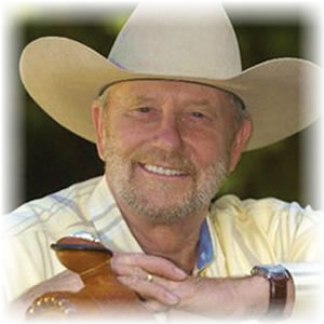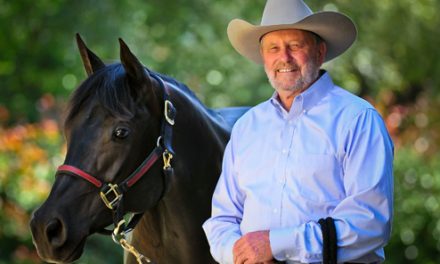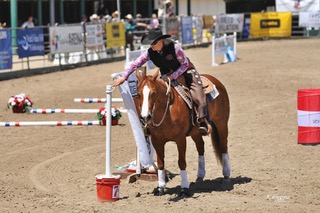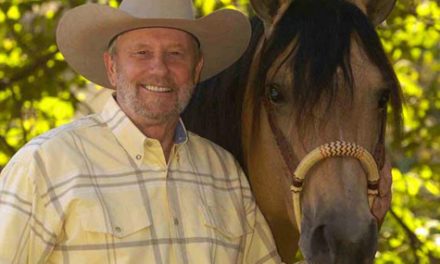
A part of being a horseman is knowing when to be firm.
We need to set standards and have expectations for our horses. There is always a pecking order in a herd. When a horse is a member of a herd, it knows how to behave and what is expected of it. It is no different with us. We are obviously not going to kick our horse if it doesn’t do what we want as a boss mare would do. However, we can duplicate that leadership by controlling the feet and putting pressure on the horse, and sometimes that means you have to use more pressure than you would like. If you have a horse that is spoiled and is walking all over you, feeding it cookies and being gentle with it is not going to get the job done. Eventually the horse will hurt you if you don’t correct the behavior. If your horse crowds you when you are leading it or when it is in the crosses tie, and the horse doesn’t move over when you touch it, increase the pressure until the desired result is achieved, in this case the horse moves over. This is a win for you as you upped the stakes and let the horse know, in the language he understands, your expectation. This is firm, not cruel, instruction that mimics how horses communicate with each other.
It doesn’t make any difference what discipline you ride.
Sometimes we get really hung up on the aspects of the discipline we ride. I grew up doing horse shows during the day and gymkhana in the evenings. On weekends we would ride under the railroad bridge to the beach and ride in the sand. Our horses were versatile and riding in different environments makes for a good horseman. It is easy to just work in the arena and some riders are very into that. It doesn’t make any difference which discipline you ride, as eight percent of the training of any horse in the foundation and every horse needs control of the shoulders and hips. Jumping, three-day eventing, dressage all require the basics. The aids may be executed a little different but the basics remain the same.
Self-evaluation.
Over the years, I have had the opportunity to work with several good trainers who I really respect. One was a dressage trainer from Australia, Major Miguel Trevora. I thought I was a pretty good horseman but once I started working with him I realized I had a lot to learn. Though I had good communication skills and I got along great with horses I didn’t have all the knowledge I needed. For example, as we worked young horses, eighty percent of the time I could get on a horse’s back and be out of the trail within an hour but I could not lead the horse or pick up its feet. Most of the time when I was riding them I felt like I was sitting on a stick of dynamite. Becoming a horseman involves self-evaluation. Wile I thought initially that I was doing great, I realized my approach was too fast. I needed to back up and gently the horse first. Lead it, pick up its feet, and be able to touch it all over. Then when I got on, I was in a better situation.
Education and adding to your skills.
Growing up, we sacked out the horses enough to get a saddle on them, pull the nose around and step on. The horse might buck or bolt off and we just dealt with it because that was he common approach to working with a young horse. Over the years my learning evolved and that is what a horseman does. Our ideas change, we add skills, and learn that not all horses react the same and we are able to adjust. Now I don’t see any difference between a wild horse and a domestic horse. I’ve worked with domestic horses that I wouldn’t get on for two or three weeks and I’ve had mustangs that I rode the next day. It is learning to read the horse, through experience, and trusting your judgment.
The willingness and patience to revisit previous lessons.
Another thing that makes a good horseman is the willingness to go backward at times. For example, when I am working with a horse and making progress and then suddenly we are not making any progress, I have learned to revisit previous lessons. I may need to start from the beginning and build the knowledge and trust of the horse again. Years ago when I started working with problem horses, I would first try to fix the problem, for example, a horse that would not stand at a mounting block. I soon realized that you can’t tech a horse to stand at a mounting block if it does not know how to lead properly. If the horse won’t stop by the mounting block, but runs rights through your hands, or it will not move its shoulder or hip over, you have to go back to basics. I have learned to just start with basics. I teach ground manners, respect for my space, and control on the ground. Then the maneuver of getting horse to stand at the mounting block becomes very easy.
In the last thirty-five years I have seen a lot of people use a stud chain. There are circumstances when a stud chain is needed, but in the last thirty-five years I have probably used one six or seven times. I have worked with a lot of big warm bloods and almost always the owners brought them in using a stud chain. I am usually glad they do because those horses are so used to pulling through your hands that you need something to get the horse’s attention so that you have some type of control of their feet. The key is not to get to this point but to be able to lead the horse with a halter and lead rope. That is horsemanship.
Recognize what you need to do
Horsemanship is learning to recognize what you need to do. It is like having a recipe with many ingredients. Part of the recipe of working with horses his compassion, kindness, and a love for the horse. You have to have a work ethic; you must be persistent, even sometimes tenacious. You need to be consistent with your expectations, not correcting bad behavior one day and ignoring it the next. I have been in the Horse Expo world and on the road for almost thirty-five years and I’ve seen a lot of people come and go, some talk a good talk but if you look at what they are doing with the horse, the actions don’t match the talk. You can have a conversation with a horse and make a correction to set boundaries, and you may get a response that you don’t want, but that boundary must be set. For example, if a horse tries to run over me, I make a correction and let the horse know he cannot do that. If you are a small person, even with a stud chain, a horse will run right over you if he hasn’t learned to stand and lead properly.
The equipment does not train the horse.
A good horseman knows that the equipment does not train the horse; it is what we do with the equipment that trains the horse. While you need good quality equipment to train a horse there is, for example, no magic bit. I have several types of snaffle bits because each horse’s mouth is a little different. I have different styles of hackamores in different weights for the same reason. A leverage bit is like buying a pair of shoes and can be very hard to fit. The bit that you like may not be the bit that is going to work best for your horse. Sometimes the problem is not even the bit, it is recognizing the chinstrap is too tight. Many times loosening the strap gives the horse release and there is less bite. A horseman looks at what is going on and figures out the problem and what works best for the horse; he doesn’t just go buy a more severe bit.
A horseman is patient and has compassion for horses. He has a willingness to work with the horse, he knows when to ask for help and continues educating himself. The discipline doesn’t matter. Once you take the saddle off, most people can’t tell in what discipline the horse is ridden. I believe that the becoming a horseman is a life long journey, I’ve had the honor of being called a horseman a couple of time bit I don’t necessarily see myself as a horseman. See myself in the process of continuing to learn and realizing that I have a long way to go. That is in itself a part of being a good horseman.



